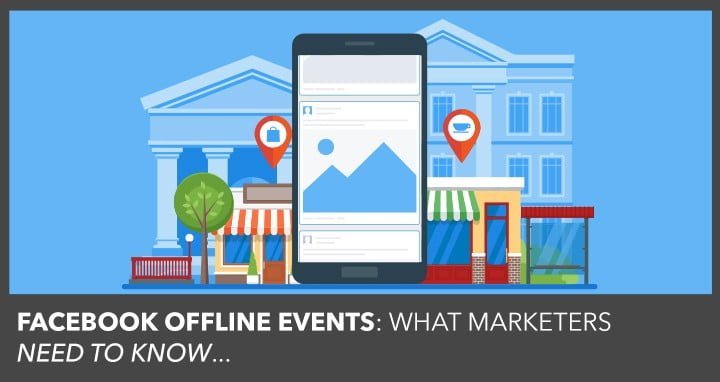Facebook recently rolled out a powerful addition to its advertising platform.
This feature is called Facebook “Offline Events,” and it’s revolutionizing our ability to track and optimize for transactions that aren’t usually “seen” by the Facebook pixel.
Facebook explains…
“With offline conversion measurement on Facebook, you can track when transactions occur in your physical retail store and other offline channels (ex: orders made over the phone) after people see or engage with your Facebook ad.”
This is HUGE for any business that may suffer from a “black hole” in their tracking because transactions (lead gen, sales, etc.) aren’t always occurring on web pages where Facebook can track.
This can make it hard to analyze what’s actually working in ad campaigns or to validate that your advertising is generating business… period. For example:
- If you have conversations with prospects or customers on the phone or through email. (At DigitalMarketer, we have a sales team and this can make it tough to attribute their sales to a specific Facebook ad campaign.)
- You’re a brick and mortar store who’s looking to drive in-store visits and purchases (asking people in an ad to use a coupon code for a free appetizer can work, but is still tough to track).
- If you sell your products online AND in stores, it can be tough to attribute the in-store purchases back to an ad campaign (BassPro shop can track if you clicked on a Facebook ad for a fishing pole and bought online… but what if you saw the ad and decided to purchase in store?).
- If you’re a coach or consultant that’s looking to drive phone conversations or demos.
So…
How Does Facebook Offline Events Work?
Offline events can be found in the Business Manager menu:

After you click “Upload Offline Events” on the next screen, you’ll see a pop-up that’s very similar to uploading a data custom audience:

This is where Facebook asks you to upload your DATA. This is the “offline data” that they are going to match with your Facebook ad data to see if any of these people had viewed or clicked your ads in the past.
Facebook asks you to include event descriptors and identifiers.
Event descriptors help identify the actual transaction. These are anything from the…
- Event time
- Event name
- Value
- Currency
- Order ID
This will help Facebook understand what action this person took offline.
Identifiers are specific information about the individual. Anything from…
- first name
- last name
- phone number
- email address
- city
- county
- zip code
- date of birth
…and so on (there are 17 identifiers).
NOTE: ALL OF THIS INFORMATION IS NOT REQUIRED – include as much as possible to ensure you get as high of a match rate as possible.
Once uploaded, you’ll see this screen:

Facebook shows how many records you uploaded, how many of them matched (a match rate 60% or higher is great), the date range, and date updated.
You also have the ability to create custom and/or lookalike audience from this data, too, which is VERY powerful for future campaigns and retargeting.
To see how these offline conversions attribute to Facebook campaigns in ads manager, select “Offline conversions” from the delivery columns:

Facebook will report on the number of offline conversions that they could contribute to specific campaigns, ad sets, and ads.
Facebook offline conversions are powerful in their current form, but it also shows Facebook’s commitment to tracking and validating the effect that advertising is having on businesses’. I believe this is just the beginning and we’ll continue to see more advanced tracking in the near future.
Now, it’s your turn… do you have any offline data that you could upload?
Let us know how it goes!
(NOTE: Have a great product, but no one knows it exists? We’re launching a brand new 3-part mini-class that will show you how to launch a profitable Facebook ad campaign that gets you high-quality traffic and leads who are primed and ready to buy whatever you’re selling… within 5 days! Register now to get started.)
